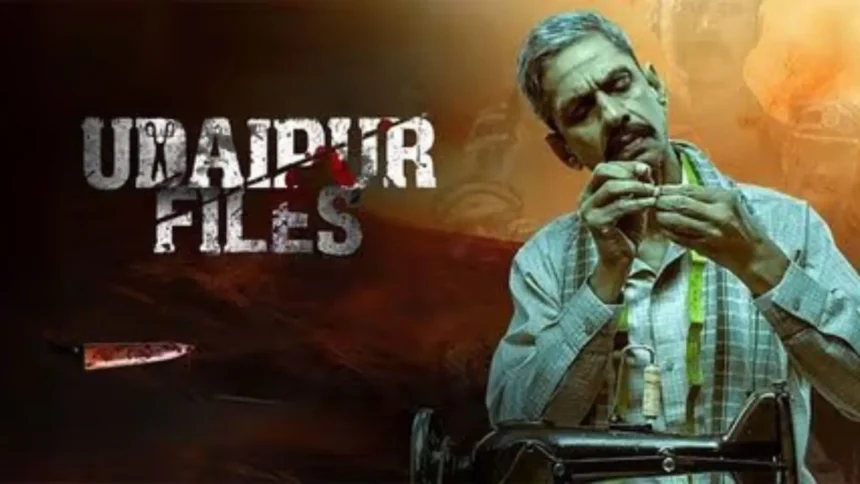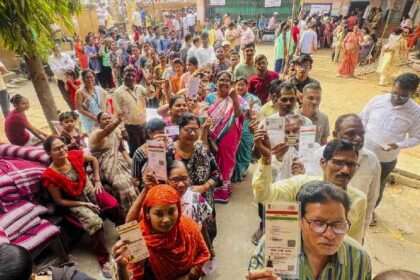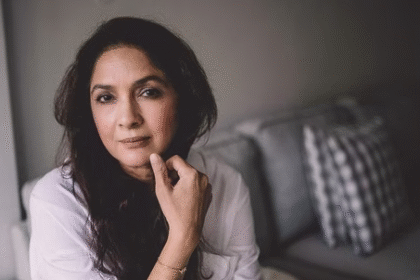Judicial Restraint and Cinematic Controversy — The Udaipur Files at the Crossroads of Law and Expression
In an era where art and politics are frequently entwined, the Indian judiciary finds itself at a complex intersection. On July 15, 2025, the Supreme Court of India declined to lift the interim stay on the release of the controversial film The Udaipur Files, while simultaneously urging the Central Government’s Review Committee to accelerate its decision on the matter. The case has sparked a nationwide conversation about the balance between freedom of expression, public sensitivity, and regulatory oversight.
The stay—first imposed by the Rajasthan High Court—was challenged before the apex court by the film’s producers, who argued that the delay was stifling creative liberty and preemptively silencing a narrative that they claim is grounded in documented truth. The Court, however, refused to intervene prematurely, noting that the statutory review mechanism must be allowed to take its course.
This judicial development isn’t just about a movie. It’s a legal and cultural moment that underscores how India continues to grapple with competing constitutional principles—Article 19(1)(a) guaranteeing freedom of speech, and Article 19(2) permitting “reasonable restrictions” in the interest of public order, morality, and the sovereignty of the state.
What Is The Udaipur Files?
The film reportedly dramatizes the 2022 killing of Kanhaiya Lal, a tailor in Udaipur who was murdered by extremists allegedly motivated by religious vengeance. The murder shocked the country, igniting debates over radicalization, law enforcement failures, and rising communal tensions. The producers of The Udaipur Files claim the movie is a factual retelling aimed at “exposing the ideological roots” of the crime and advocating for justice.
However, critics argue that the film treads dangerously close to communal provocation, and its promotional content, including trailers, have been accused of inflaming religious sentiments. Petitioners before the High Court and now the Supreme Court contend that the film is less a work of art than a calculated attempt to polarize society under the guise of free speech.
The Legal Terrain: Precedent, Process, and Perception
Indian courts have walked a delicate path when adjudicating artistic expression. While the judiciary has historically leaned in favor of creative freedom—citing landmark judgments in cases involving films like Bandit Queen, Udta Punjab, and Padmaavat—it has also stepped in when the content has been found to pose a direct threat to public harmony or provoke unrest.
In this case, the Supreme Court has refrained from delivering an immediate verdict on the film’s content. Instead, it has reinforced the sanctity of institutional review by directing the Central Board of Film Certification’s (CBFC) Review Committee to expedite its deliberations and arrive at a decision “as per law.”
This move, while procedural, is significant. It signals judicial restraint—a willingness to defer to the executive’s domain—while preserving the Court’s prerogative to review the outcome if the situation demands.
Between Law and Public Sentiment
The controversy surrounding The Udaipur Files reflects the increasingly polarized environment in which Indian cinema now operates. On one end are filmmakers who argue that cinema must have the freedom to confront uncomfortable truths. On the other are civil society groups, minority organizations, and legal petitioners who warn against the weaponization of visual storytelling for political or ideological gain.
For the judiciary, the challenge is immense: how to uphold the fundamental right to free speech without ignoring the very real potential for societal unrest. In this case, the Court has neither censored nor cleared the film. Instead, it has pressed pause, trusting the statutory process to do its job—while keeping a watchful eye on what comes next.
Inside the CBFC Review Process — Censorship, Bureaucracy, and the Politics of Film Certification
As the Supreme Court maintains the stay on The Udaipur Files and defers the matter to the Central Board of Film Certification (CBFC) Review Committee, the spotlight has now shifted from the courtroom to the corridors of regulatory power. What happens next will be determined not by public opinion or judicial decree, but by a bureaucratic mechanism that has often found itself caught between the ideals of creative freedom and the pressures of political and social sensitivities.
Understanding the CBFC and Its Role
The CBFC, commonly referred to as the “Censor Board,” operates under the Ministry of Information and Broadcasting. Despite its name, the board doesn’t technically censor films—it certifies them under the guidelines of the Cinematograph Act, 1952. Filmmakers must submit their work to the CBFC for review, after which the board may grant a certificate for unrestricted public viewing (U), limited adult viewership (A), or impose cuts and modifications before doing so.
The Review Committee is a secondary arm within the CBFC structure that steps in when a filmmaker or complainant challenges a decision made by the Examining Committee. In the case of The Udaipur Files, the producers are awaiting clearance from this committee, following objections raised during the initial certification process.
The Bureaucratic Tightrope: Between Expression and Order
At the heart of the CBFC’s dilemma lies a profound contradiction: How does a regulatory body promote artistic liberty while simultaneously maintaining public order in a country as vast, diverse, and politically sensitive as India?
On one hand, the CBFC is expected to protect the democratic right of filmmakers to challenge dominant narratives, critique power, and depict societal realities—even when they are dark, controversial, or painful. On the other hand, it is constantly pressured by political actors, religious groups, and civil society organizations who insist that certain narratives be suppressed in the name of social cohesion.
In the case of The Udaipur Files, the stakes are particularly high. The film deals with a real-life murder involving religious violence. The fact that the crime was public, brutal, and captured on video gives the story immense emotional weight. But it also makes any cinematic interpretation of it potentially explosive.
The CBFC Review Committee, therefore, must decide whether the film crosses the line between documentation and provocation. Are the facts sensationalized? Is there a disproportionate focus on one community? Does the film intend to inform or to inflame? These are the questions that will guide their final decision.
Censorship vs Certification: The Evolving Legal Landscape
India’s courts have, over the decades, made repeated efforts to distance censorship from the certification process. In the 1989 S. Rangarajan v. P. Jagjivan Ram case, the Supreme Court held that freedom of expression cannot be suppressed on account of “threatened demonstration or processions or threats of violence.” In the Padmaavat case of 2018, the Court allowed nationwide release despite violent protests, affirming that threats of unrest could not override constitutional freedoms.
Yet, paradoxically, the CBFC continues to operate in a space where these freedoms are frequently negotiated rather than guaranteed. Political pressure, social media outrage, and threats of boycott all influence the process—sometimes subtly, sometimes openly.
In The Udaipur Files case, the CBFC’s task is complicated further by the fact that the issue is not fictional or speculative. The murder of Kanhaiya Lal is part of public record, and any depiction of it must be evaluated both legally and ethically.
The Political Undertone: Who Controls the Narrative?
Bureaucratic mechanisms rarely function in a political vacuum. The CBFC, despite being an ostensibly independent body, operates under the direct purview of the Union Ministry of Information and Broadcasting. It is not uncommon for governments—regardless of political ideology—to exert influence on certification decisions, especially in cases that are likely to trigger national discourse.
With elections approaching in several states and communal tensions already simmering in some regions, The Udaipur Files has become more than a film—it’s a political lightning rod. Every decision surrounding its release will carry consequences beyond the screen.
Supporters of the film argue that suppressing it constitutes political censorship, a silencing of truth in the name of maintaining “peace.” Critics say the film’s very existence may be an act of provocation masked as storytelling.
The CBFC Review Committee, in this sense, finds itself less as an artistic referee and more as a gatekeeper of social stability.
Next Steps and Judicial Oversight
The Supreme Court’s instruction to the CBFC was not merely procedural—it was a quiet assertion of constitutional oversight. By directing the committee to expedite its decision, the Court made clear that delay cannot become a substitute for denial. However, it also implied that the regulatory process must run its course before any higher judicial intervention.
Once the CBFC Review Committee issues its final certification—or refusal thereof—the matter may again be brought before the judiciary. In that eventuality, the court will have to engage not just with the film’s content, but with the legitimacy of the process that preceded it.
As the legal and regulatory processes surrounding The Udaipur Files continue to unfold, the film has already triggered a public and political storm across India. The debates now go well beyond questions of certification, touching upon broader themes of communal identity, electoral calculus, freedom of expression, and the right to shape national memory.
From television studios to university campuses, and from religious organizations to political platforms, the controversy has ignited polarizing narratives—with each side claiming to protect either democracy or societal harmony. In this battleground of narratives, cinema has become both weapon and witness.
A Divided Public: Art or Agenda?
Across social media platforms, thousands of voices are clashing in real-time. Hashtags like #JusticeForKanhaiyaLal, #ReleaseUdaipurFiles, and #StopHateCinema trend simultaneously, reflecting a nation deeply divided not just on facts, but on how those facts should be presented—or whether they should be dramatized at all.
On YouTube and X (formerly Twitter), several right-leaning influencers and media personalities have positioned The Udaipur Files as a suppressed truth-telling exercise. According to them, the stay on the film’s release represents the stifling of “Hindu voices” and a “cover-up” of radical violence. They argue that if cinema is permitted to depict historical atrocities like the Holocaust or 9/11, India must also permit the creative portrayal of religiously-motivated killings.
On the other hand, prominent secular and liberal figures warn that The Udaipur Files may do more harm than good. They argue that the film oversimplifies a complex social issue, and in the current political climate, risks deepening communal fault lines. “This isn’t just a film,” tweeted one political commentator, “it’s a potential accelerant in an already combustible atmosphere.”
Political Exploitation: Rallying the Base
It’s no surprise that political parties across the spectrum have weighed in—each framing the issue to suit their ideological position and voter base.
The Bharatiya Janata Party (BJP), particularly at the state level, has publicly supported the filmmakers, questioning why a movie based on a real and verified crime is being suppressed. Several BJP MPs have called the stay on the film’s release a “violation of artistic freedom” and a “selective censorship” that emboldens radicalism. Some even claimed that the opposition is “afraid of truth reaching the public before elections.”
The Congress party and several regional players, meanwhile, have walked a more cautious line. While they have not explicitly called for a ban, they have emphasized the importance of responsible storytelling and the role of institutional checks. Leaders from parties like the TMC, DMK, and SP have warned against turning tragedies into tools of communal polarization.
Interestingly, political reactions have also varied geographically. In Rajasthan—where the murder that inspired the film took place and where elections are due—both ruling and opposition parties are measuring their words carefully, aware that any misstep could alienate voters or ignite unrest.
Religious Groups and Community Responses
The reaction from religious organizations has been mixed but intense. Several Hindu groups have rallied in favor of the film, calling it an “eye-opener” and organizing prayer meetings, marches, and screenings of the trailer in temple complexes. They argue that the film serves a higher social purpose: awakening the majority to threats they believe are being underplayed.
In stark contrast, multiple Muslim organizations, including regional councils and ulemas, have expressed concern over the tone of the film. They argue that The Udaipur Files unfairly demonizes an entire community for the actions of a few individuals, and risks undoing years of inter-faith harmony. Legal petitions from these groups were among those that first led to the Rajasthan High Court’s interim stay.
Prominent Islamic scholars and social activists have issued appeals to the CBFC and judiciary, urging them to ensure that films about religious violence do not cross the line into vilification or stereotyping.
Media Coverage: Echo Chambers and Editorial Lines
India’s media, long accused of partisanship, has covered the Udaipur Files episode in starkly different tones. Right-leaning channels like Republic TV, Zee News, and Sudarshan News have featured extensive coverage on the case, presenting it as a struggle against institutional suppression and elite bias. Editorials often present the judiciary’s caution as unnecessary and the CBFC process as politically compromised.
Meanwhile, liberal and centrist platforms such as The Wire, NDTV, and Scroll.in have focused on the potential consequences of the film’s release. Their editorials often invoke past examples of films and events that triggered violence or social tension, questioning whether cinema can truly claim innocence in how it frames conflict.
The result is an echo chamber effect—audiences now receive information that reinforces their existing beliefs, deepening polarization rather than fostering dialogue.
Cinema as Memory-Maker and Myth-Molder
What this ongoing controversy reveals most starkly is the powerful role cinema plays in shaping collective memory. In a country where literacy varies but visual culture runs deep, films are not just entertainment—they are historical lenses, ideological battlegrounds, and instruments of mass education or manipulation.
The Udaipur Files is, at its core, a battle over who gets to tell the story of a national trauma—and how that story is told. It raises uncomfortable but essential questions: Can films dealing with real tragedies remain objective? Should they? Where does storytelling end and political messaging begin?
Cinema, in India, has never been just cinema. It has served as a mirror, a magnifier, and sometimes a megaphone for the political and cultural pulse of the nation. When controversial films enter the public sphere, they rarely remain confined to the screen. They spill into newsrooms, into courtrooms, into parliament—and sometimes into the streets. The Udaipur Files, with its real-world origins and communal implications, is already shaping discourse far beyond the boundaries of celluloid.
Historical Precedents: Films That Changed Law and Society
To understand the potential long-term impact of The Udaipur Files, it is important to revisit how past films—especially those that courted legal or political controversy—have shaped India’s jurisprudence and public sentiment.
In 1994, Bandit Queen faced an onslaught of legal battles for its depiction of Phoolan Devi’s life. The Supreme Court eventually upheld the filmmaker’s right to artistic interpretation, reinforcing the principle that cinematic storytelling need not mirror every factual detail to be constitutionally protected speech. The decision established that art must be assessed holistically, not through isolated moments.
In 2018, Padmaavat faced violent protests and state-level bans due to its fictional depiction of historical events. The Supreme Court intervened, striking down the bans and affirming that freedom of expression cannot be compromised by threats of violence or political pressure. The ruling became a milestone in Indian media law, reiterating that films cleared by the CBFC cannot be arbitrarily stopped.
And in 2022, the release of The Kashmir Files reignited national debates over memory, justice, and political intent. While the film was a commercial success and received government backing, it also drew criticism for communal stereotyping. It paved the way for a new genre of cinema—what many began calling “testimonial politics on screen.”
Each of these films influenced not just cinema culture, but legal norms. They set benchmarks on how far artistic license can go, and where the state’s role in regulating or supporting narrative ends.
Legal Fallout: The Judiciary’s Expanding Role in Cultural Disputes
What makes The Udaipur Files different is its timing. India today finds itself at a particularly sensitive juncture—politically charged, socially fragmented, and digitally amplified. With misinformation, hate speech, and algorithmic outrage often spiraling out of control, even a brief cinematic scene can spark real-world conflict.
As a result, the judiciary now finds itself increasingly called upon to perform a role it was not originally designed for: arbiter of culture.
In the Udaipur Files hearings, the Supreme Court has taken a cautious stance, allowing the CBFC’s institutional process to unfold, but reserving its authority to step in if necessary. This aligns with recent trends where courts prefer procedural nudges over direct censorship. However, it also reflects judicial discomfort—how does one strike a balance between protecting constitutional freedoms and pre-empting potential harm?
The problem is not just legal; it’s epistemological. How does a judge, trained in law, decide whether a cinematic portrayal is socially responsible? How does one measure the “intent” behind a narrative? Can potential public disorder be accurately predicted, and should it be allowed to determine artistic boundaries?
Such questions are growing more urgent—and recurring more frequently.
Social Impact: When Cinema Shapes Public Behavior
India’s deeply emotional public engagement with cinema means that controversial films have the power to influence not just thought, but action.
The release of The Kashmir Files led to increased calls for policy review on the plight of Kashmiri Pandits, but also incidents of hate speech at public screenings. Similarly, Udta Punjab—a film about drug abuse—sparked heated political debates in Punjab during an election year, contributing to voter mobilization.
In the case of The Udaipur Files, the stakes are even higher. The film is rooted in a murder that occurred barely three years ago, one that was religiously motivated, caught on camera, and shared widely across social media platforms. The visceral nature of the crime and its symbolic overtones make the cinematic portrayal a sensitive national issue.
If released without balance, the film could influence public perception of an entire community. If withheld indefinitely, it could fuel allegations of censorship and political bias, further deepening distrust in institutions. The social impact, therefore, lies not just in the story told, but in how the decision surrounding the film is perceived.
Digital Amplification: Cinema in the Age of Algorithms
A defining characteristic of modern controversies is that they do not unfold in isolation—they are shaped by social media. The internet does not simply report on outrage; it manufactures and multiplies it. Memes, YouTube reactions, Telegram channels, and viral hashtags play an outsized role in framing a film long before it hits theatres.
In the case of The Udaipur Files, much of the polarization began with the release of its trailer, which circulated widely on X, Facebook, and right-wing portals. Analysis by digital media watchdogs revealed that a coordinated campaign pushed pro-release messaging across regional languages, while dissenters faced trolling and threats.
This raises new legal and ethical concerns. Should trailers be regulated separately? Does algorithm-driven outrage constitute a legitimate public response? What role should streaming platforms, which often acquire such films post-theatrical run, play in ensuring balance?
The digitization of discourse has collapsed the distance between reel and real, fiction and policy, art and activism. In this hyper-connected environment, the judiciary, government, and CBFC are no longer the only stakeholders—content consumers now wield enormous power to influence outcomes.








